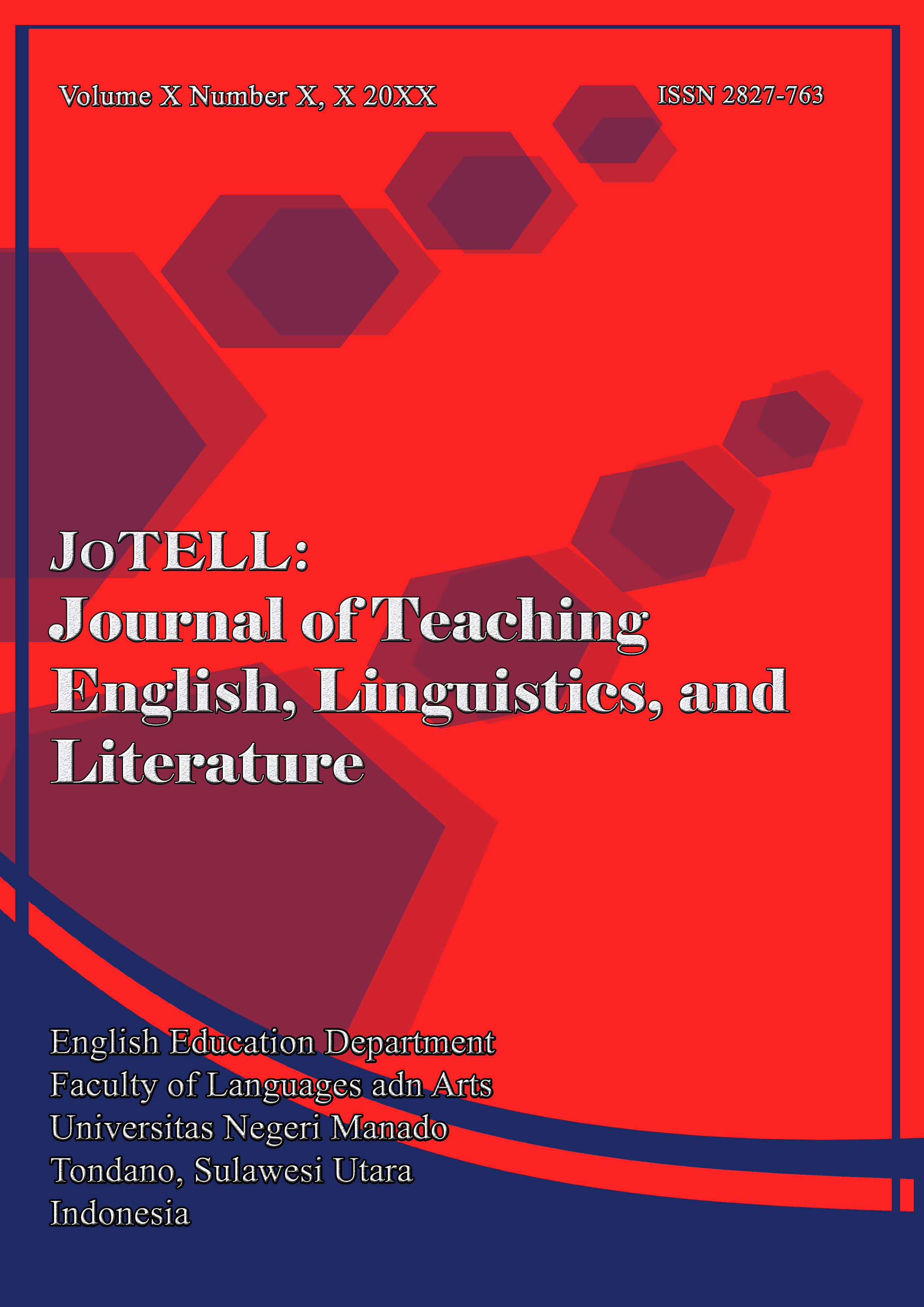SOCIAL CLASSES IN THEODORE DREISER’S SISTER CARRIE
DOI:
https://doi.org/10.36582/jotell.v2i7.6793Keywords:
Social Class, Class distinction, Mimetic Theory, Relationships, NaturalismAbstract
The purpose of this study was to reveal how the concept of social class appeared and how it affected the main character and her relationship with others in Theodore Dreiser’s Sister Carrie. This study was made using qualitative approach. In analysing this study, the researcher used M. H. Abraham’s mimetic theory. The result of this research reveal that there are three kinds of social class that the characters mainly grouped into which are the lower, middle, and upper classes. The groupings are made based on the situation of the characters jobs and income, living conditions, social circle and material wealth. Social class affected the main character by changing her point of view as she adapted to live in the late 19th century Industrialized Chicago. This affected her relationship with other people in a way that she would break off her relationship with others if they are no longer useful to her to get what she wants the most which are wealth and fame, which in the end she regretted
References
Cai, X. (2015). On the Practical Significance of “Sister Carrie.†In X. Cai (Ed.), Proceedings of the 2015 International Conference on Arts, Design and Contemporary Education (pp. 176–178). Atlantis Press. https://doi.org/10.2991/icadce-15.2015.39
Dreiser, T. (2009). Sister Carrie : a novel. Floating Press.
Hussman, L. E. (2021). Theodore Dreiser. In L. E. Hussman (Ed.), Encyclopedia Britannica. Encyclopedia Britannica.
Jones, R. J. B. (2001). Routledge Encylopedia of International Political Economy (R. J. B. Jones, Ed.; 1st ed., Vol. 1). Routledge.
Lower class Definition & Meaning | Britannica Dictionary. (n.d.). Retrieved July 4, 2022, from https://www.britannica.com/dictionary/lower-class
Luke, A., & Graham, P. (2006). Class Language. Encyclopedia of Language and Linguistics, 1(1), 1–17. https://doi.org/10.1016/B0-08-044854-2/00374-6
Magilvy, J. K., & Thomas, E. (2009). A First Qualitative Project: Qualitative Descriptive Design for Novice Researchers. Journal for Specialists in Pediatric Nursing, 14(4), 298–300. https://doi.org/10.1111/j.1744-6155.2009.00212.x
Oesch, D. (2022). Contemporary Class Analysis JRC Working Papers Series on Social Classes in the Digital Age 2022/01. JRC Working Papers on Social Classes in the Digital Age, 1–27. https://ec.europa.eu/jrc
Overview | Rise of Industrial America, 1876-1900. (n.d.). Library of Congress, Washington, D.C. 20540 USA.
Pahlevi, D. R., & Sagimin, E. M. (2020). Social Classes Reflected By The Main Characters In Kevin Kwan’s “Crazy Rich Asians†Novel. Jurnal DinamikA, 1(2). https://doi.org/10.18326/dinamika.v1i2.1-15
Purohit, D. (2013). Four Critical Theories from the view point of M H Abrams. Journal of Humanity. https://www.researchgate.net/publication/301228266_Four_critical_theories_from_view_point_of_MHAbrams
Sabudu, D. (2009). The Complexity of American Woman Identity in the Nineteenth Century as seen in Theodore Dreiser’s Sister Carrie (Feminist Perspective). E-CLUE, 3(2), 817–838.
Slatta, R. W. (1987). Comparative Frontier Scoial Life: Western Saloons and Argentine Pulperias. https://digitalcommons.unl.edu/greatplainsquarterlyhttps://digitalcommons.unl.edu/greatplainsquarterly/429
Social Effects of the Industrial Revolution (1800-1920). (2014). http://www.marshallcavendishdigital.com/articledisplayre-
Strossmayer, J., & Zvonimir Obradović, P. (2018). Naturalist Elements and Social Critique in Theodore Dreiser’s Sister Carrie. Josip Juraj Strossmayer University of Osijek.
Yujie, L. (2021). The Analysis of Consumer Culture Embedded in Sister Carrie. Journal of Sociology and Ethnology, 3(8), 57–63. https://doi.org/10.23977/jsoce.2021.030812
Zeng, X. (2021). A study of the reflection of naturalism in the heroine in sister carrie. Theory and Practice in Language Studies, 11(9), 1067–1071. https://doi.org/10.17507/tpls.1109.12
Downloads
Published
How to Cite
Issue
Section
License
Copyright (c) 2023 JoTELL : Journal of Teaching English, Linguistics, and Literature

This work is licensed under a Creative Commons Attribution-ShareAlike 4.0 International License.












